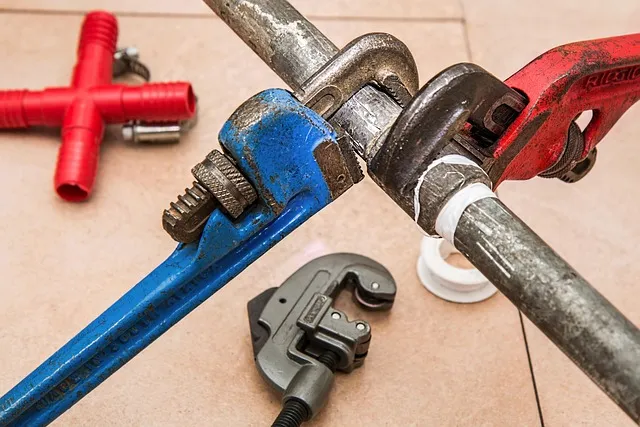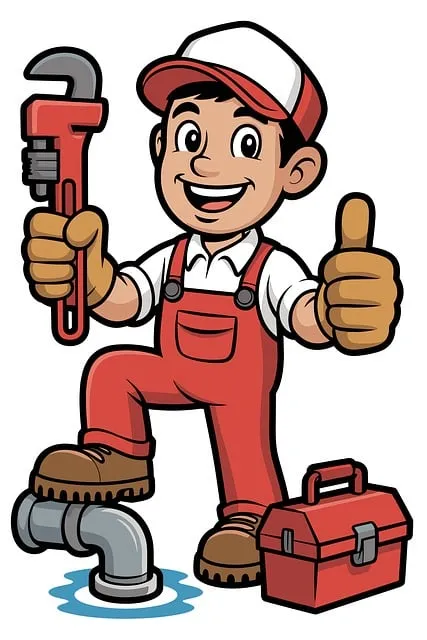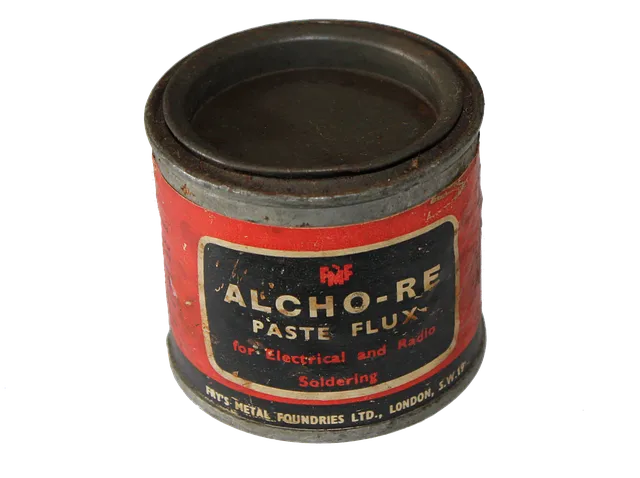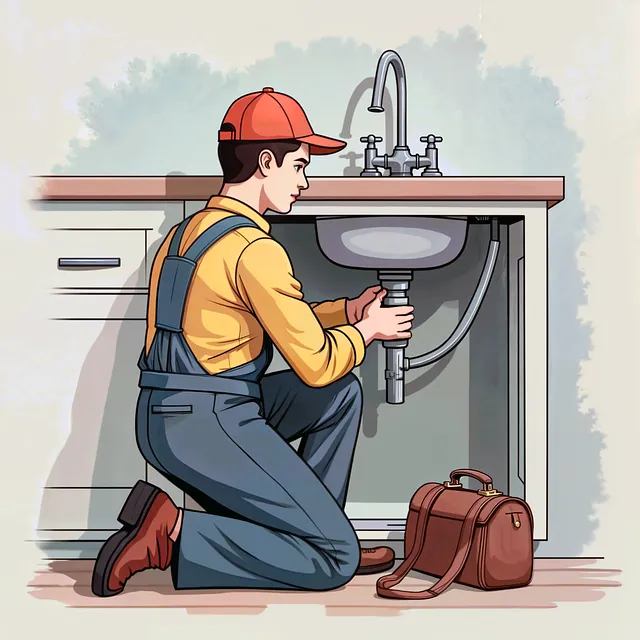Pipe repairs are essential for maintaining reliable plumbing systems in homes and businesses, addressing issues like corrosion, tree root infiltration, and animal gnawing. The initial step involves assessing and diagnosing problems using advanced tools. Modern repair techniques, such as relining and trenchless excavation, offer efficient solutions with reduced environmental impact, making them ideal for urban areas. Choosing the right materials, like PVC or PEX pipes, ensures durability and longevity. A structured process for DIY repairs includes shutting off water, inspecting damage, and replacing affected sections. For complex issues, professional plumbers with specialized knowledge and equipment are recommended to pinpoint hidden problems and provide lasting solutions. Regular maintenance, including periodic inspections and simple repairs, prevents future costs. Costs for pipe repair vary based on damage extent, pipe type, and work complexity, with DIY methods suitable for minor tasks but complex repairs often requiring professional plumbing services.
Pipe repair and replacement is an essential aspect of home maintenance, addressing issues that can range from minor leaks to major structural damage. Understanding common pipe problems and their causes is the first step in effective management. This article guides you through assessing and diagnosing pipe issues, exploring traditional and modern repair methods, and choosing suitable materials. We also offer a practical step-by-step guide, maintenance tips, and cost considerations, empowering you with the knowledge to tackle or prevent future pipe repair needs.
Understanding Common Pipe Issues and Their Causes

Many pipe issues arise from natural wear and tear, aging infrastructure, or environmental factors. Corrosion, for example, is a common culprit, caused by exposure to moisture, minerals, and chemicals over time, leading to rust buildup and weakness in pipes. Tree roots are another frequent problem, as they can infiltrate pipes through even the smallest cracks, causing blockages and leaks. Burrowing animals like squirrels or rodents can also cause damage by gnawing on pipes, particularly in areas with limited protection. Identifying these common issues is crucial for effective pipe repair, ensuring homes and businesses maintain reliable plumbing systems.
Assess and Diagnose Pipe Problems: Tools and Techniques

Assessing and diagnosing pipe problems is a crucial step in any pipe repair process. It involves careful inspection, using specialized tools, and employing various techniques to pinpoint the exact nature and location of damage or leaks. This initial phase sets the stage for effective and efficient pipe repair or replacement.
To accurately assess pipes, professionals often employ non-invasive methods like visual inspections with torches or cameras to examine hard-to-reach areas. Advanced tools such as pressure gauges, flow meters, and moisture detectors help in identifying issues like corrosion, cracks, or blockages. These techniques ensure that the root cause of pipe problems is accurately diagnosed, allowing for targeted and cost-effective solutions, ultimately streamlining the pipe repair process.
Types of Pipe Replacement Methods: Traditional vs. Modern Approaches

When it comes to pipe replacement and repair, there are two prominent approaches that have evolved over time: traditional methods and modern techniques. The traditional method involves digging up large sections of a pipeline to replace or repair damaged pipes, which can be labor-intensive and disruptive to the surrounding environment. This process often requires significant excavation, leading to potential delays and additional costs.
In contrast, modern pipe replacement methods have emerged as game-changers in the industry. Techniques like relining, where a new pipe is inserted inside the old one, or trenchless excavation, which uses advanced technology to replace pipes without extensive digging, offer more efficient and less invasive solutions. These modern approaches not only reduce the time and financial burden but also minimize disruptions to nearby properties and landscapes, making them ideal choices for urban areas with limited space and high traffic volumes.
Choosing the Right Materials for Pipe Repair and Replacement

When undertaking pipe repair or replacement, selecting the appropriate materials is paramount. The right choice ensures durability, prevents future leaks, and offers a seamless fit. For instance, in water supply lines, opt for high-quality PVC or copper pipes known for their resistance to corrosion and long lifespan. These materials are easy to install and maintain, making them popular choices for many homeowners.
For older metal pipelines, specifically those made of iron or lead, replacing them might be necessary due to deterioration. In such cases, modern alternatives like PEX (cross-linked polyethylen) pipes gain favor. PEX is flexible, corrosion-resistant, and freeze-resistant, making it ideal for both cold and hot water applications. Additionally, its ease of installation reduces labor costs, making it a cost-effective solution for Pipe Repair.
Step-by-Step Guide to Pipe Repair: A Practical Approach

Pipe repair is a common home maintenance task that can be approached with a systematic, step-by-step process. Begin by shutting off the water supply to the affected pipe to prevent leaks and ensure safety. Next, assess the damage—whether it’s a burst pipe, corrosion, or leaks at joints. For small issues like corrosion, use a wrench to loosen and remove damaged sections, then apply rust remover and allow it to soak before replacing with new pipes.
For more significant damage, such as a burst pipe, cut away the damaged section using a saw or pipe cutter, taking care not to damage surrounding pipes. Clean the edges of the cut and install new piping, ensuring proper fitting with couplings and clamps. After connecting the new pipe, turn on the water supply and check for leaks. If leaks persist, re-tighten fittings or replace as needed.
When to Call in Professional Plumbers for Complex Repairs

When faced with complex pipe repairs, it’s crucial to know when to call in professional plumbers. While minor issues like clogs or small leaks can often be tackled by homeowners using simple tools and DIY methods, more intricate problems demand expert attention. Signs that it’s time to involve professionals include persistent or recurring issues despite your attempts at repair, severe water damage around pipes, unusual odours, low water pressure, or visible signs of pipe corrosion.
Professional plumbers possess the specialized knowledge and equipment needed for thorough assessments and accurate diagnoses. They can identify hidden problems that may be difficult to detect, ensuring long-lasting solutions. Moreover, complex repairs often involve specific techniques and materials that require licensed experts to ensure safety, prevent further damage, and maintain building integrity.
Preventing Future Pipe Issues: Maintenance Tips and Tricks

Regular maintenance is key to preventing future pipe issues. Start by inspecting pipes for any signs of damage, corrosion, or leaks on a periodic basis. Addressing these problems early can save significant time and money in the long run. Simple measures like sealing joints, repairing small cracks, and checking valve functionality can go a long way in maintaining the integrity of your plumbing system.
In addition to regular inspections, keeping an eye on water pressure levels is essential. High pressure can lead to pipe damage, while low pressure may indicate issues with the water supply or distribution lines. Preventative measures such as installing pressure regulators and ensuring proper drainage can help maintain optimal conditions within your pipes, promoting longevity and minimizing the need for costly pipe repair.
Cost Considerations: Budgeting for Pipe Repair and Replacement

When considering pipe repair or replacement, cost is a primary factor for most homeowners. The expense can vary greatly depending on several factors, including the extent of damage, type of pipe, and whether you’re dealing with metal, plastic, or copper pipes. Simple repairs like fixing a leak might only cost a few hundred dollars, while more complex replacements such as rerouting or installing new pipes throughout your home could run into the thousands.
It’s crucial to create a budget that accounts for materials, labor, and any unforeseen issues that may arise. Homeowners can save money by opting for less expensive materials or doing some tasks themselves, but professional plumbing services are often necessary for complex repairs and replacements to ensure longevity and prevent further damage.
